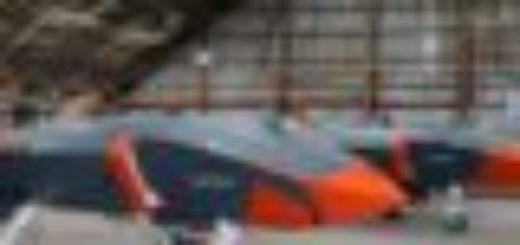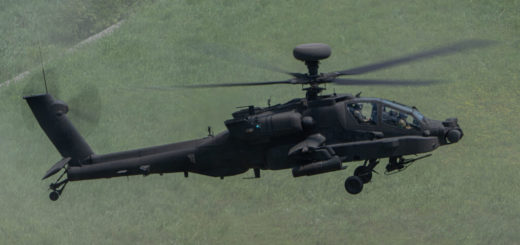magniX CTO talks about powering electric helicopters, new batteries
The electric aviation industry may be currently going through its very own trough of disillusionment after a few years of, admittedly, high expectations. However, the 2025 Paris Air Show, which took place June 16-22, 2025, showed there is no shortage of energy in this space.
Key companies in electric and hybrid-electric aviation, such as AURA AERO, Vaeridion, Voltaero, BETA Technologies, Archer, Pipistrel, and Elfly leveraged the platform provided by the Paris Air Show to share their latest technological advances with industry peers, investors and media.
A case in point is magniX, a pioneering developer and manufacturer of electric motors for aviation based in Everett, Washington, which unveiled a new 400 Wh/kg battery cell.
This is the latest iteration of the Samson 300, a battery magniX introduced in June 2024, with electric flight applications in mind.
Miquel Ros / AeroTimeWith this new battery, magniX is looking to expand its industry footprint, getting its propulsion systems not just into battery-electric aircraft, but also in helicopters, and eVTOLs, as well as in other specialized high-performance applications outside aerospace.
AeroTime sat down with magniX Chief Technology Officer, Riona Armesmith, to explore the technical specifications of this new battery technology and its potential impact across the company’s broader project portfolio.
“We’ve been working with NASA extensively on what is new and novel in electric propulsion, addressing standards gaps to be able to certify it. We are at the point where we are building conforming hardware and getting into engineering and certification testing. What stresses an electric engine is very different from, for example, a piston engine. If we want to test its endurance, for example, we have to write a test plan and then actually test the engine to show that the test is actually representative. So, this is a lot of what we are doing, leading this for the whole industry and then working through the standards committee and align [with the rest of the industry].”
In this regard, Amersmith referred to the fact that, since 2019, magniX engines have been undergoing testing under real conditions, on a modified version of a DHC-2 Beaver seaplane (called “eBeaver”), which Canadian operator Harbour Air has been flying around Vancouver (these flights tests are performed without paying passengers, though, due to regulatory limitations).
Pragmatism as a policy
Amersmith explained that the company is trying to develop a battery that the industry actually needs, not just coming up with new products in the hope that customers will come knocking at the door. The latest Samson battery is based on Li-Ion, a relatively well-known chemistry.
“We avoid exotic chemistries, this is very important for us, because when you start getting into exotic [battery] chemistry, the life cycle of the battery drops. And life cycle is very important for operator’s economics. You can buy super performing batteries that have only one life cycle. So, better have something that has the right cycle life, at the right cost, that it is easy to integrate, safe, reliable, high quality…” she added.
At a time in which eVTOLs and the so-called advanced air mobility industry are gathering most of the public attention, Armesmith highlighted the role traditional helicopters can play in the future once fitted with electric engines.
In 2022 magniX tested a battery-electric propulsion system on a Robinson helicopter and it is currently doing the same with a hydrogen fuel-cell. What’s more, in March 2025, magniX range of electric engines, called HeliStorm, specifically designed for the needs of helicopters.
“We are bringing everything together: the new helicopter engines, batteries and everything, and we intend to fly them next year.” she explained.
magniX declares itself platform-agnostic when it comes to the use of its propulsion systems.
“I have no skin in the game whether it is a helicopter, an eVTOL, whatever…we’ll sell batteries and engines to anyone who wants them!” Armesmith said, not before adding that “I think there is practicality to helicopters. The most efficient way to do vertical flight is with a single rotor. This has been proven time and again. That’s just physics! That’s the difference [between helicopters and eVTOLs] to me. A Robinson needs around 200 Kw to take-off, while eVTOLs have eight or nine engines at 100 Kw each! It’s pragmatic!” The post magniX CTO talks about powering electric helicopters, new batteries appeared first on AeroTime.
The electric aviation industry may be currently going through its very own trough of disillusionment after a few…
The post magniX CTO talks about powering electric helicopters, new batteries appeared first on AeroTime.







